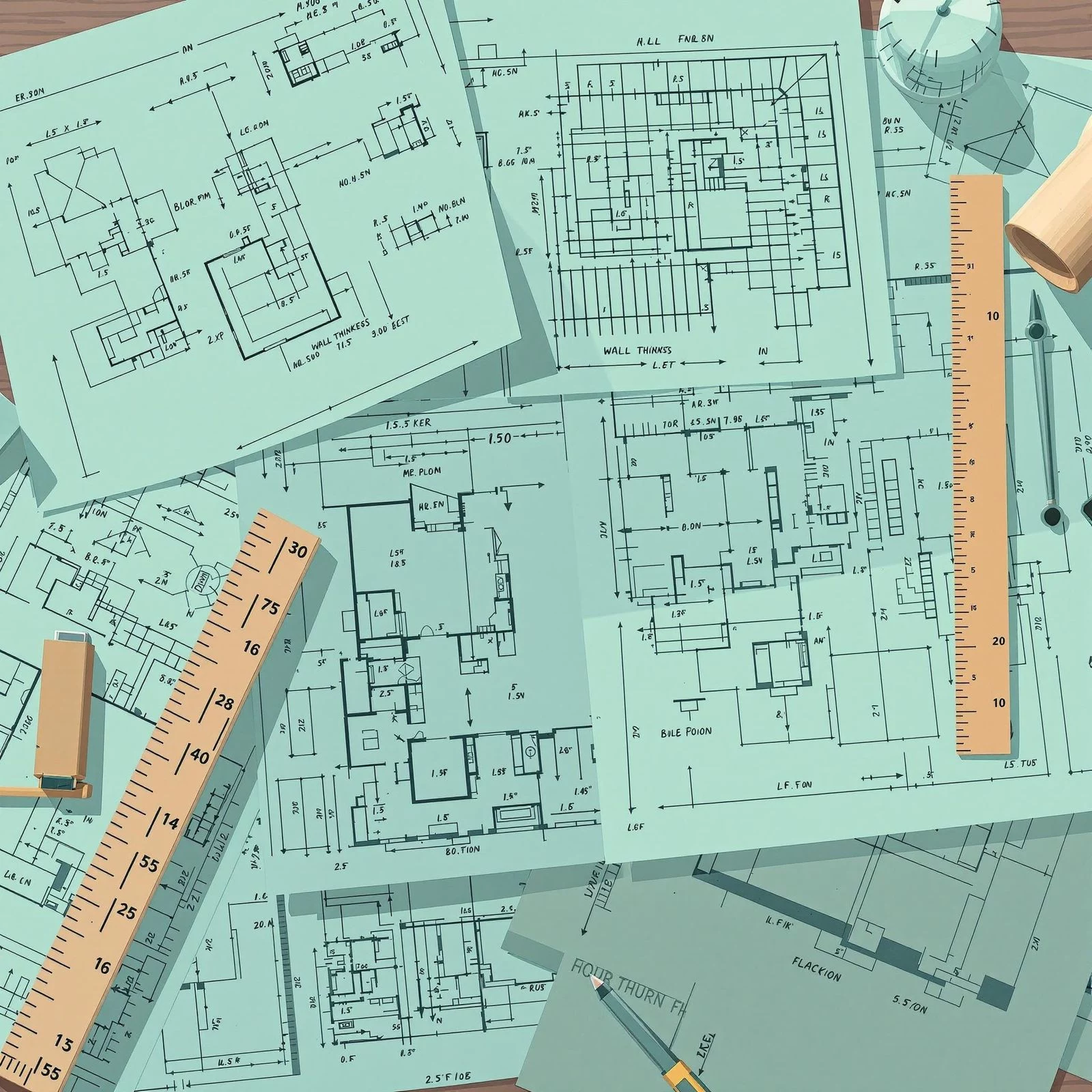
Essential Measurements in Architectural Drawings: What Every Building Owner Should Know
Architectural drawings serve as the foundation for building projects, providing a detailed blueprint that guides the construction process from start to finish. Among the most critical elements of these drawings are the measurements, which ensure that the design is precise, functional, and aligned with the intended vision. For building owners, understanding these essential measurements is key to making informed decisions and ensuring the success of their projects.
This article explores the essential measurements in architectural drawings, their significance, and how they impact various stages of a building project. Whether you’re planning a small renovation or a large commercial development, knowing these measurements will help you navigate the complexities of the design and construction process.
1. Dimensions: The Foundation of Precision
Dimensions are the most fundamental measurements in architectural drawings. They indicate the size, width, height, and depth of various building elements, ensuring that everything fits together seamlessly.
Key Types of Dimensions
- Overall Dimensions: These provide the total length, width, and height of the building or specific elements, such as walls or floors.
- Internal Dimensions: These focus on the layout of interior spaces, such as room sizes and hallway widths.
- Detailed Dimensions: These include specific measurements for individual components, such as doors, windows, and staircases.
Why Dimensions Matter
Accurate dimensions ensure that the design is buildable and that all components fit together as planned. Errors in dimensions can lead to costly delays, material wastage, and structural issues.
2. Scale: Translating Design to Reality
Architectural drawings are often created at a reduced scale to fit on paper while maintaining proportional accuracy. Scale helps translate these reduced dimensions into real-world measurements.
Common Scales in Architectural Drawings
- 1:100: Used for general building layouts, providing an overview of the entire structure.
- 1:50: Commonly used for floor plans and elevations, offering more detailed views of specific areas.
- 1:20 or 1:10: Used for detailed elements, such as joinery, furniture, or fixtures.
Why Scale Is Important
Scale ensures that all stakeholders, from architects to contractors, interpret the drawings accurately. Misinterpretation of scale can result in construction errors and design inconsistencies.
3. Room Sizes and Layouts: Ensuring Functionality
Room sizes and layouts are critical measurements that directly affect the functionality and comfort of a building. These measurements dictate how spaces are used and how well they meet the needs of occupants.
Standard Room Sizes
- Bedrooms: Typically range from 9–12 square meters for small bedrooms to 14–20 square meters for master suites.
- Kitchens: Range from 7–15 square meters, depending on whether it’s a compact or open-plan design.
- Living Rooms: Often start at 15 square meters but can be much larger in open-concept designs.
Key Considerations for Layouts
Effective layouts ensure smooth traffic flow, optimize natural light, and provide adequate storage and utility space. Architects often rely on building codes and ergonomic standards to determine appropriate room sizes and layouts.
4. Wall Thickness and Structural Measurements
The thickness of walls and other structural elements is an essential measurement that affects the building’s stability, insulation, and space utilization.
Types of Walls
- Load-Bearing Walls: Typically thicker (20–30 cm) to support structural loads.
- Partition Walls: Thinner walls (10–15 cm) used for dividing internal spaces.
Structural Elements
- Columns: Dimensions depend on load requirements, typically ranging from 20x20 cm to larger sizes in high-rise buildings.
- Beams: Sized based on span and load, often ranging from 15x30 cm to 30x60 cm in residential buildings.
Accurate measurements of structural elements ensure that the building is safe, durable, and compliant with engineering standards.
5. Openings: Doors, Windows, and Skylights
Openings are crucial for ventilation, natural light, and accessibility. Measurements for doors, windows, and skylights must be precise to ensure functionality and aesthetic appeal.
Standard Sizes for Openings
- Doors: Standard widths range from 70–90 cm for interior doors and up to 120 cm for exterior doors.
- Windows: Vary widely based on design, with common sizes ranging from 60x60 cm to 120x180 cm.
- Skylights: Sizes depend on roof design, typically ranging from 60x90 cm to larger custom dimensions.
Impact of Accurate Measurements
Properly sized openings improve energy efficiency, enhance aesthetics, and ensure compliance with accessibility standards.
6. Ceiling Heights: Balancing Comfort and Design
Ceiling height is a key measurement that affects the building’s spatial perception and comfort. Standard ceiling heights vary based on building type and design preferences.
Typical Ceiling Heights
- Residential Buildings: Commonly range from 2.4–3 meters.
- Commercial Buildings: Often exceed 3 meters to accommodate lighting, HVAC systems, and open layouts.
- Luxury Spaces: High ceilings, often 3.5 meters or more, are used to create a sense of grandeur.
Ceiling height influences lighting, acoustics, and overall aesthetics. Architects consider these factors alongside structural limitations and energy efficiency when determining the ideal height.
7. Staircases: Ensuring Safety and Accessibility
Staircases require precise measurements to ensure safety, accessibility, and compliance with building codes. Key measurements include riser height, tread depth, and overall width.
Standard Staircase Measurements
- Riser Height: Typically ranges from 15–18 cm for comfortable steps.
- Tread Depth: Commonly 25–30 cm to provide ample footing.
- Staircase Width: A minimum of 90 cm for residential buildings, with wider stairs for public or commercial spaces.
Well-designed staircases improve safety, ease of use, and aesthetic integration within the building’s overall design.
8. Site Measurements: Ensuring Contextual Fit
Site measurements, including plot size, setbacks, and landscape features, are critical for ensuring the building fits within its surroundings and complies with zoning regulations.
Key Site Measurements
- Plot Size: Determines the maximum allowable footprint of the building.
- Setbacks: The minimum distance from property boundaries, often dictated by local regulations.
- Topography: Elevation changes and soil conditions influence foundation design and landscaping.
Understanding site measurements helps architects design structures that blend harmoniously with their environment and meet legal requirements.
Conclusion
Understanding the essential measurements in architectural drawings empowers building owners to actively participate in the design and construction process. By familiarizing yourself with dimensions, scales, room layouts, structural elements, and other key metrics, you can ensure that your project aligns with your vision and functional requirements.
At ENGINYRING, we support building owners and professionals with optimized hosting solutions tailored to architectural and construction workflows. From 2D CAD to BIM, our VPS services provide the performance and reliability needed to handle even the most demanding projects. Contact us today to learn how we can help bring your architectural vision to life.









